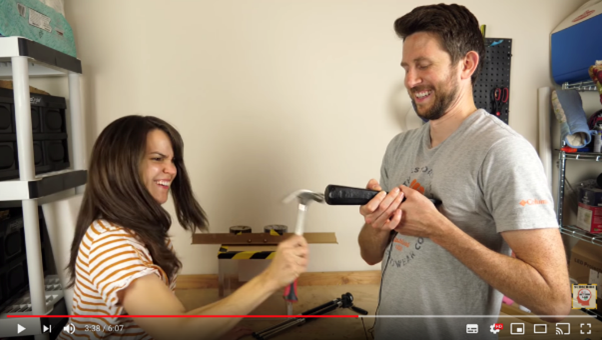Lesson 7 - Choosing Media
5. Video
5.2. Presentational Skills
Video can be used to:
- Demonstrate experiments or phenomena, particularly:
- Where
equipment or phenomena to be observed are large, microscopic, expensive,
inaccessible, dangerous, or difficult to observe without special
equipment (see )
- Where
resources are scarce, or unsuitable for student experimentation (e.g. live
animals, human body parts) (see )
- Where the
experimental design is complex (for example, )
- Where there is
an element of risk or danger in conducting the experiment (
- Where the experimental behavior may be influenced by uncontrollable but observable variables
- Illustrate
principles involving dynamic change or movement (see )
- Illustrate abstract
principles through the use of specially constructed physical models, for instance,
- Illustrate
principles involving three-dimensional space, for example, see
- Demonstrate changes over time through the use of animation, slow-motion, or speeded-up video (see an example of how Haemophilus influenzae cells take up DNA, from UBC)
- Demonstrate
correct procedures in health, safety, repairs, and maintenance (for an example,
see )
- Substitute for a field visit, by:
- Providing
students with an accurate, comprehensive visual picture of a site, in
order to place the topic under study in context; for instance see
- Demonstrating
the relationship between different elements of a system under
study (e.g. production processes, ecological balanc brady’s EMRe); for
example, see the
- By identifying
and distinguishing between different classes or categories of phenomena at the
site (e.g. );
- To observe differences in scale and process between laboratory and mass-production techniques;
- Through the
use of models, animations or simulations, to teach certain advanced
scientific or technological concepts (such as theories of relativity or quantum
physics) without students having to master highly advanced mathematical
techniques; see for instance ‘.’
- Bring students primary resource or case-study material, i.e. recording of naturally occurring events which, through editing and selection, demonstrate or illustrate principles covered elsewhere in a course
- Demonstrate
ways in which abstract principles or concepts developed elsewhere in the course
have been applied to real-world problems, for example,in the University of British Columbia’s Master of Land and Water Management
- Synthesize a wide range of variables into a single recorded event, e.g. to suggest how real-world problems can be resolved
- Demonstrate decision-making processes or decisions ‘in action’ (e.g. triage in an emergency situation) by:
- Recording the decision-making process as it occurs in real contexts
- Recording ‘staged’ simulations, dramatization or role-playing, as in the scenarios in Ryerson University’s Therapeutic Communication and Mental Health Assessment Program
- Demonstrate correct procedures in using tools or equipment (including safety procedures)
- Demonstrate
methods or techniques of performance (e.g. mechanical skills such as , sketching, drawing or painting techniques, or dance)
- Record and
archive events that are crucial to topics in a course, but which may disappear
or be destroyed in the near future, such as, for instance, street graffiti or
condemned buildings (see )
- Demonstrate
practical activities to be carried out by students, on their own (for example,
see )
